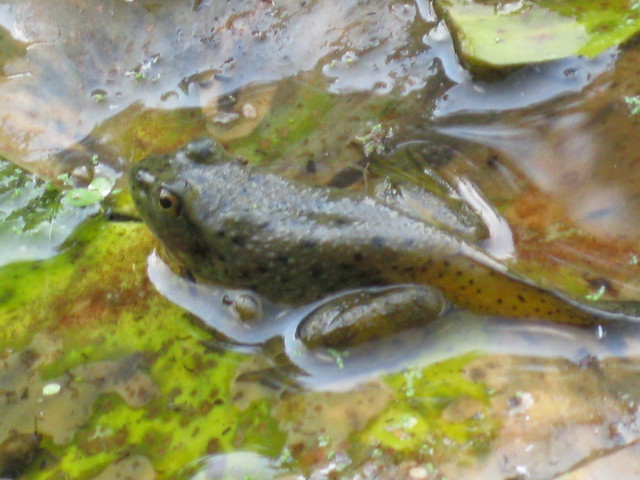Save fallen logs and shove them into a shady area of your backyard. Balance them on each other to make a little frog hut. After you scatter dead leaves around that area, your frog hideout is complete! Just wait for them to come.
You can participate in SciStarter project North American Amphibian Monitor(http://www.scistarter.com/project/19-North%20American%20Amphibian%20Monitoring%20Program), and FrogWatch(http://www.scistarter.com/project/425-FrogWatch). For FrogWatch, you are asked to record the calls of frogs.
Frogs are amphibious, spending one part of their life in water, the other on land. Even on land, frogs still rely on water and frequently visit. Frogs start out life as tadpoles, which resemble snakes with wide heads. After a long process of growing and shrinking, the tadpole will grow into a frog.
You have probably heard the soothing chorus of frogs at night, especially if you have a large, shady yard. Why do frogs croak? They croak to find mates, so only the males perform this action. The female judges the male by the loudness and frequency of his calls. The louder and more frequent they are, the stronger, and more desirable the male. Croaking does take a lot of effort and air, so some frog species have inflatable cheek pouches. They store air in these for a decent supply while croaking. Rapidly letting out air from these an be a call in itself! Not all frogs have such a trick, and must rely on their own muscle power.
You have probably seen pictures of vividly colored frogs before. Wouldn't this be conspicuous to any predator, especially on a background of green? Yes! So why aren't all brightly colored frogs eaten up? It is not such an easy meal as you think. The bright reds and yellows are meant as a warning to tell predators that the frog is loaded with poisons. A dart frog would be a nasty surprise for a hungry predator. In fact, the name 'dart frog' comes from the fact that people tipped their arrows with frog poisons. Since this coloration is used for defense, both males and females possess it. You will never see these frogs in the wild unless you live in tropical South America or Africa
Scientists have been raising frogs in captivity until it is safe to release them in the wild.
Eccentric Amphibian:
Caecilians are legless amphibians that live underground. They resemble worms, but if you look closely, you will see the difference. Caecilians are blind and very little is known about them. We don't even know their diet! You are not likely to see a caecilian because they are quite rare and tunnel deep underground.
| Caecilian with babies |







No comments:
Post a Comment